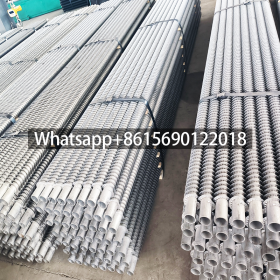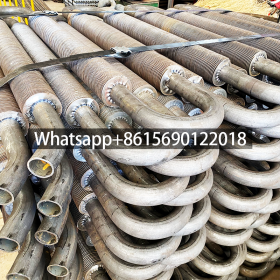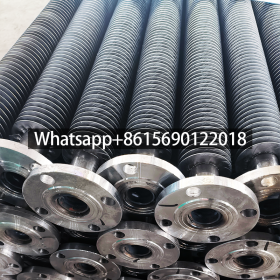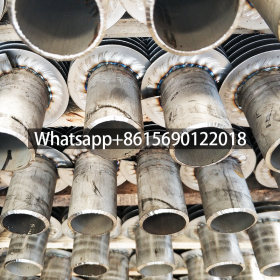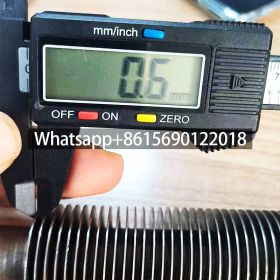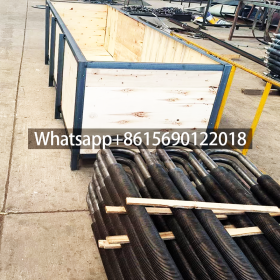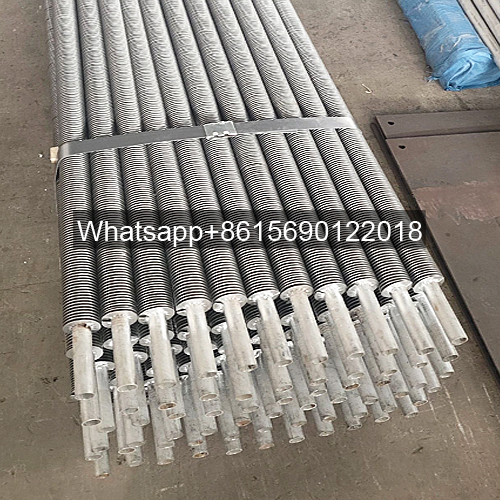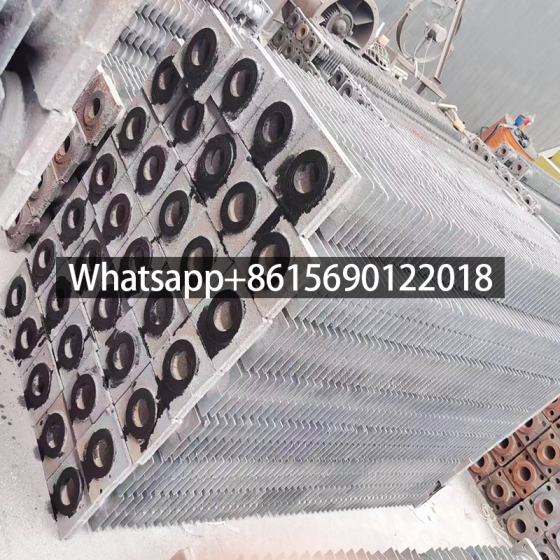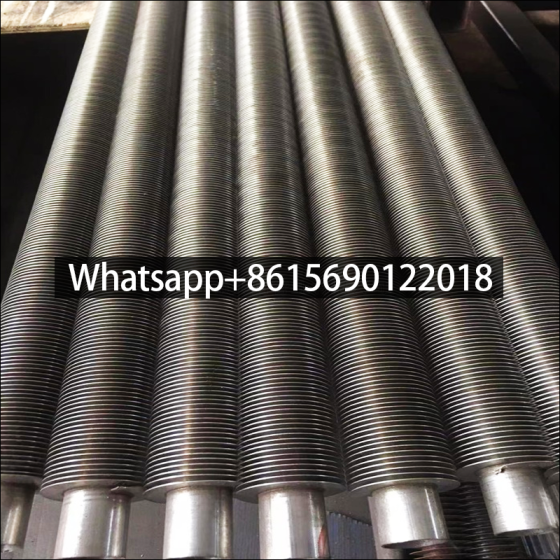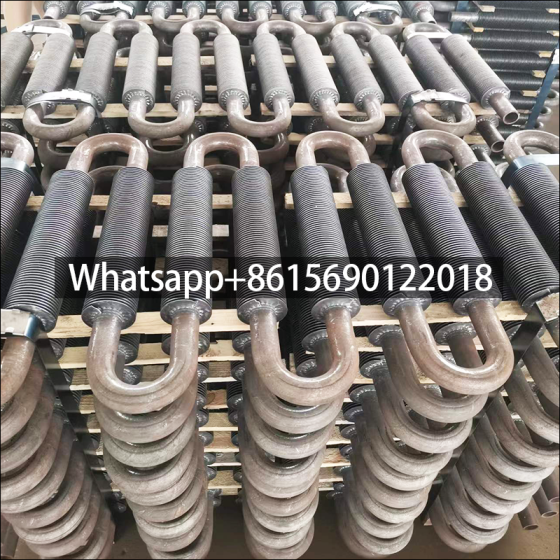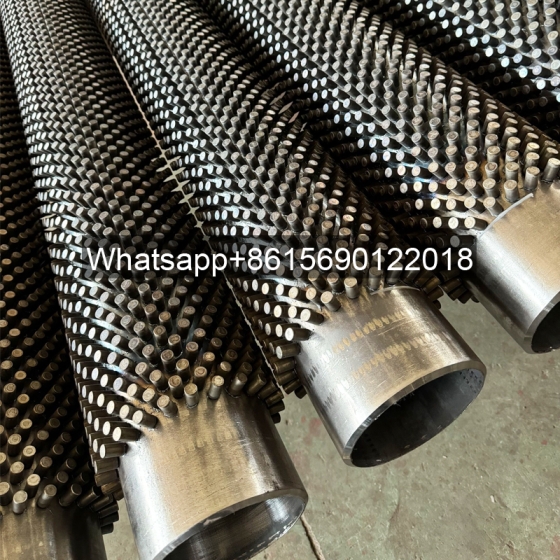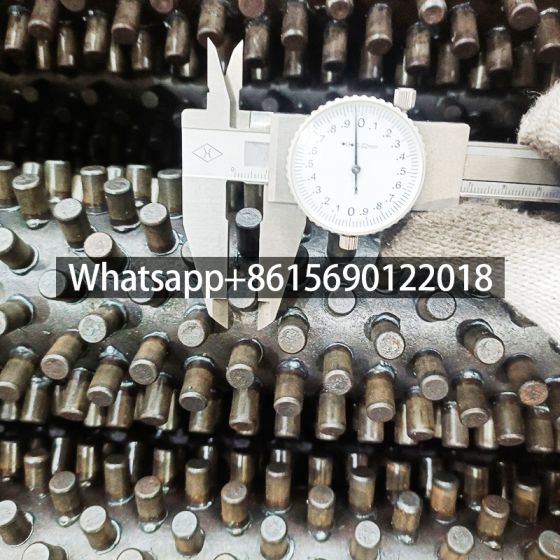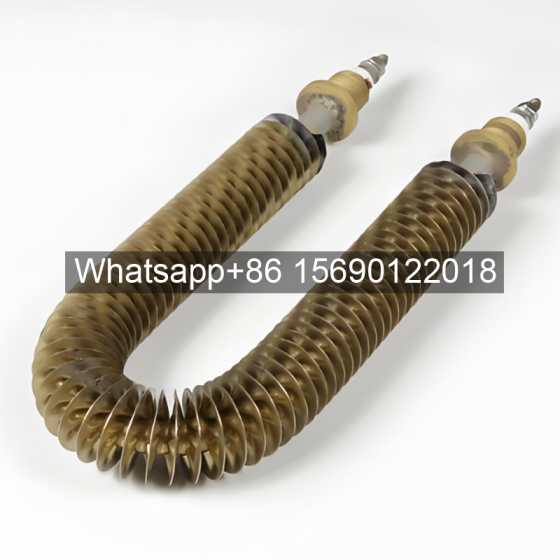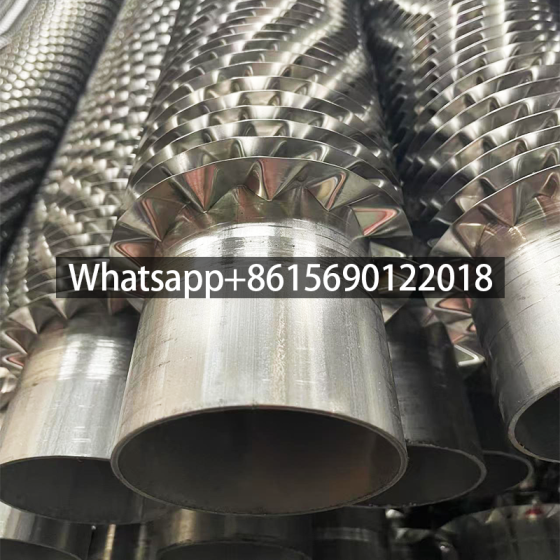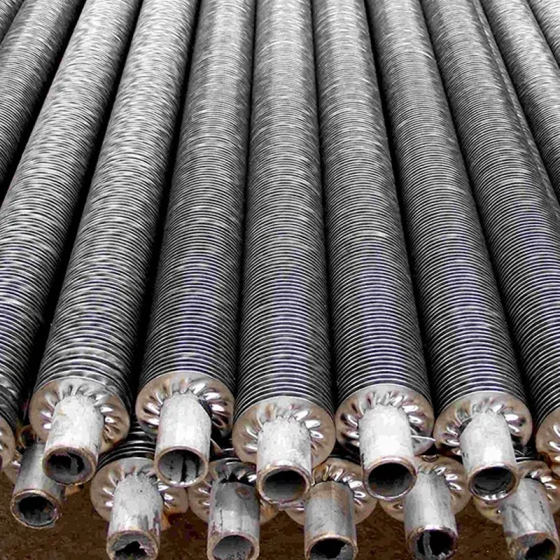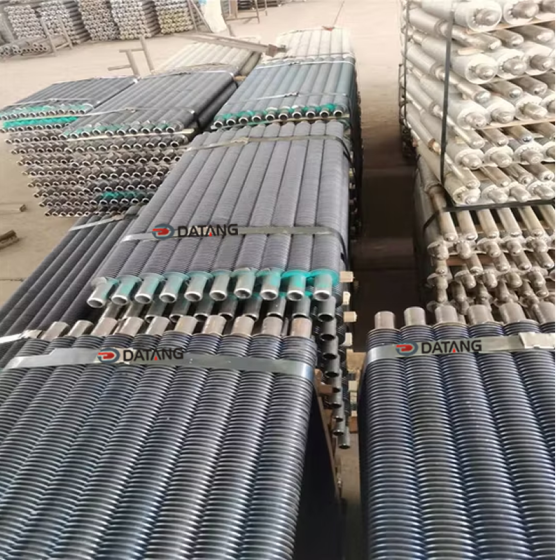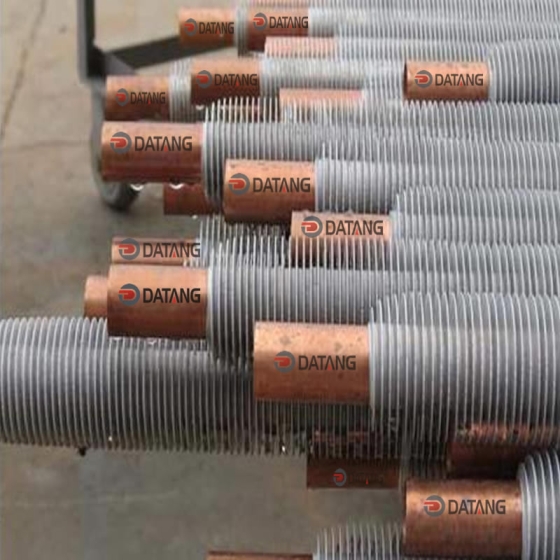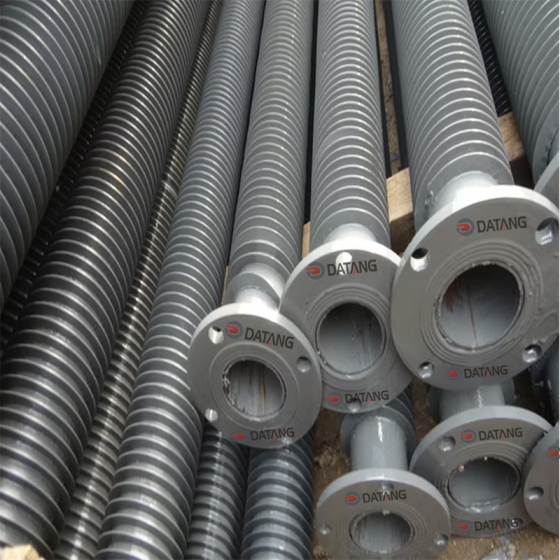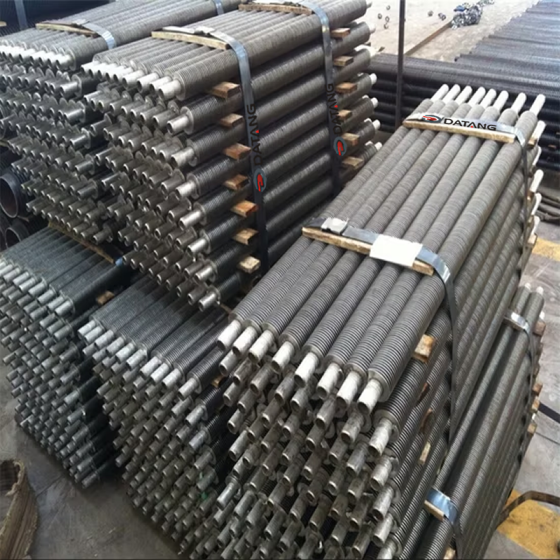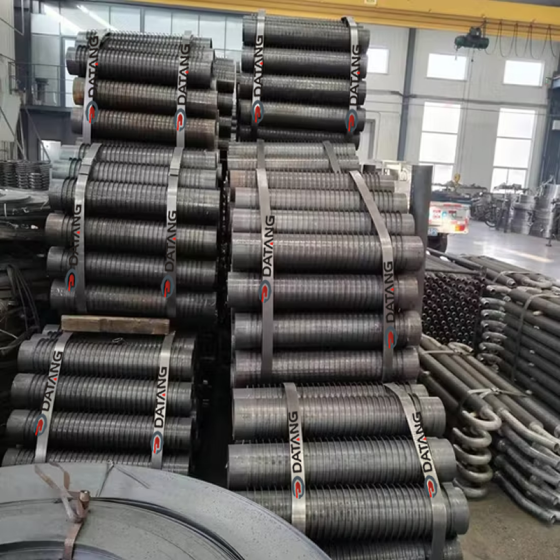Spiral Welded Finned Tube for Heat Exchanger
Datang High-frequency welded fin tube is a commonly used heat transfer element of fin tube radiator.High frequency welding is a welding technology, there are two kinds of induction welding and contact resistance welding.
| Material do tubo | Carbon steel |
| Tube OD | 16-273mm |
| Tube Thk | 2.0-15.0mm |
| Fin Material | Carbon steel strip,Stainless steel strip,Alloy strip |
| Fin Thk | 0.5-3.0mm |
| Fin Pitch | 3.0-30.0mm |
| Fin Height | 8.0-35.0mm |
WELDED FIN TUBE
High Frequency Welded Fin Tube (Continuously Welded Spiral Fin Tube):-
As the name suggests, in this type of Fin Tube the finning is a Spirally Wound.
The fins are manufactured by Spirally Winding the fin around the Base Tube and Pipe. During the winding the fin is Continuously Welded by High Frequency welding giving the Most robust bond between the the Fin and the Tube.
This type of Fin Tube is used specifically where the application involves a lot of Mechanical Stresses like continuous vibrations etc.
The welding bond between the Tube and The Fin also ensures that almost perfect heat Transfer Efficiency is achieved. Also it can give the highest operating temperature ranges.
These Fin Tubes find application in RADIATORS, AIR PREHEATERS, WASTE HEAT RECOVERY SYSTEMS, & BOILER FIN TUBES etc and are preferred in Industries like Power Plants, Chemical Industries, Steel Plants, and Chiller Plants etc.
High Frequency Welded Fin Tube (Continuously Welded Spiral Fin Tube):-
-
Manufacturing Process:- Continuously Welded Spiral Fin Tube
-
Fin To Tube Bond:- Excellent
-
Heat Transfer Efficiency:- Excellent
-
Mechanical Resistance:- Excellent (Hence can be frequently cleaned with high pressure jets unlike other fin tubes. Thereby reducing down time and increasing overall life)
-
Corrosion Protection:- Moderate
-
Temperature Range:- Up to Maximum 500 Deg C
What Is Spiral Welded Finned Tube?
A Spiral Welding Finned Tube is a type of finned tube used in heat exchangers and other applications. In a spiral welding finned tube, the fin is wound spirally around the base tube. The fin is continuously welded to the tube using high-frequency electric resistance welding. This creates a robust bond between the fin and the tube.Spiral finned tubes significantly increase the heat transfer area compared to a bare tube. They enhance heat transfer efficiency, reduce flow resistance, and minimize metal consumption.Spiral welding finned tubes find use in various industries, including power plants, petrochemicals, and waste heat recovery systems.

What is H HH type welded Finned Tube?
H-type finned tube has two kinds of single H-type and double H-type finned tube, in contrast, the double H-type finned tube is higher in strength and rigidity than the single H-type finned tube, can be used in a long arrangement space, and the H-type finned tube is more resistant to wear than the traditional finned tube.
When used, the arrangement of the order arrangement can make the H-type fin tube can achieve the function of self-cleaning when passing the heat exchange medium, so it is not easy to accumulate ash, can increase the service life of the equipment and reduce the maintenance and use cost.
H-type finned tube is mainly used in Marine boilers, power plant boilers, industrial boilers, furnaces, etc. Because the structure of H-type finned tube is different from other finned tubes, it adopts a unique shape structure, and makes multiple heat sinks contact welding on the surface of the punching welded steel pipe, which can better heat the surface and weld the solid, achieve no pore welding slag, and the welding fusion rate is as high as 98%. It has a good heat transfer coefficient.

What is Serrated Welded Finned Tube?
Serrated fin tube heating tube has excellent heat dissipation effect, the raw materials used in the fin tube radiator also ensure the stable operation of the radiator and excellent heating during the later use of the radiator. Among them, steel finned tube radiators and steel-aluminum composite finned tube radiators have been more and more selected by more people in recent years, and have become the necessary heat dissipation equipment in large areas.
Workshop with steel fin tube radiator, this series of radiator has the advantages of small thermal resistance coefficient, high metal strength and excellent anti-corrosion performance, excellent heat transfer rate, compared with other traditional radiator, in the humidity and cleanliness of the more harsh environment, fin tube radiator is more suitable for the heat dissipation device.

What is Studded Welded Finned Tube?
The steel studs are automatically resistance welded to the tube, producing high quality forge welds. Our automatic studding machines are capable of handling tube diameters from 60mm o/d to 219mm o/d and standard stud diameter of 12.7mm.
The welding process enables the combination of any grades for studs and tube: carbon, alloy, stainless steels and high nickel alloys. Alloy steel pipes are stress-relieved after studding, according to the relevant specifications for the class and grade of steel used.
What is Longitudinal welded Finned Tube?
The longitudinal finned tube heat exchanger can significantly improve the heat transfer, and its heat transfer effect is obviously better than that of the flat sheet high-frequency welded finned tube radiator.
The thermal conductivity of the corrugated high-frequency welded finned tube radiator is The flat sheet high-frequency welded finned tube radiator is about 2.2 times, but the radiators of the two structures have their own advantages and disadvantages, and people should choose carefully according to actual needs.
If the heat transfer coefficients on both sides of the tube of the high-frequency welded finned tube radiator are very different, fins should be installed on the side with the smaller heat transfer coefficient.
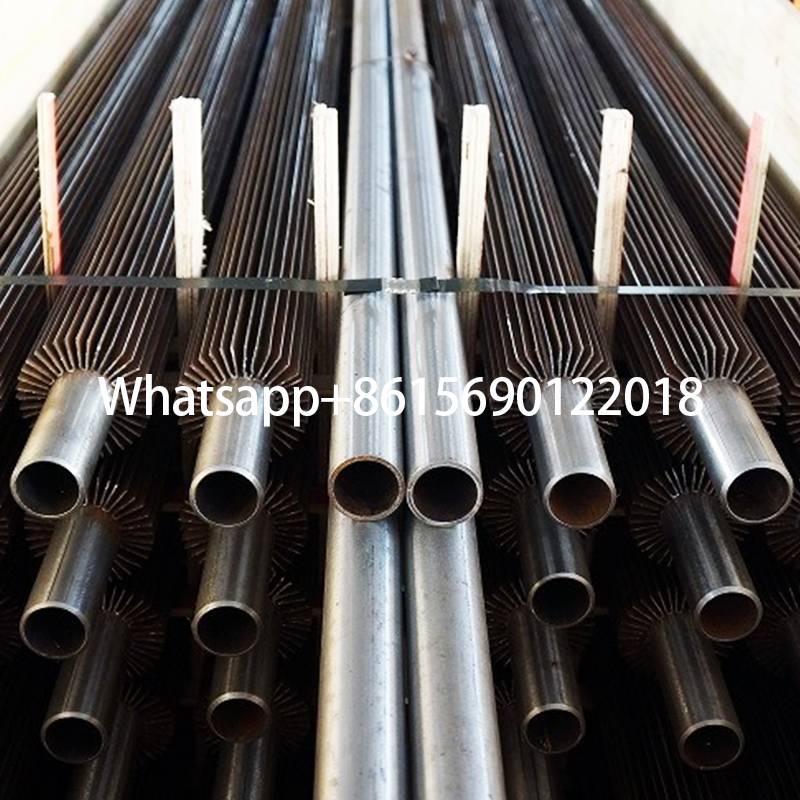
For example:
Boiler economizer
water flows in the tube, flue gas flows out of the tube, and fins should be used on the flue gas side;
Air cooler
liquid flows in the tube, air flows out of the tube, and fins should be added on the air side;
Steam generator
the tube is When the water boils, the flue gas goes out of the pipe, and the fins should be added on the flue gas side.
It should be noted that in the design, the side with the small heat transfer coefficient should be placed outside the tube as much as possible to facilitate the installation of fins.
 dtfinnedtube.com
dtfinnedtube.com

